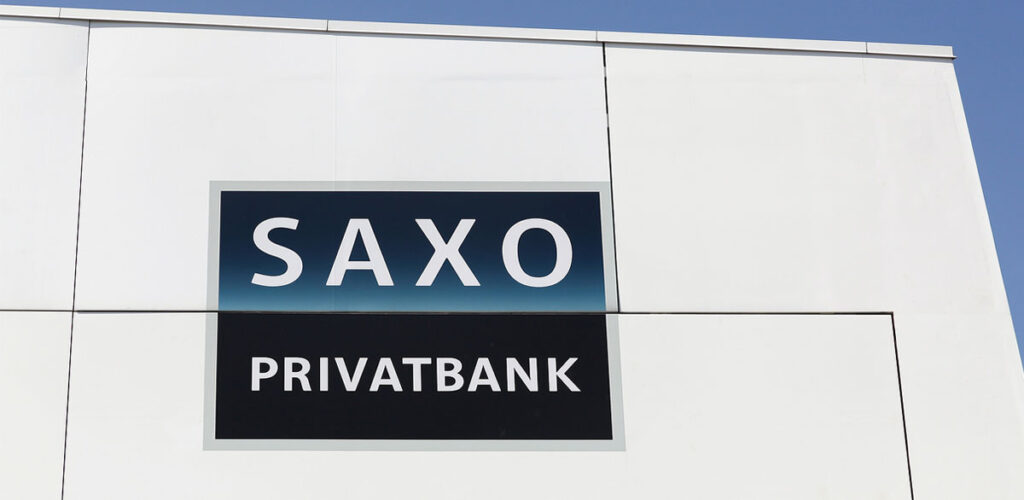 Saxo Bank joins a chorus of financial institutions singing higher praises for gold with a revised price target of $3,500. The Danish investment bank attributes its elevated prediction to a seismic shift in global order (to the detriment of the US) and a spate of alarming macroeconomic indicators on the home front. Although central bank demand remains resilient, analysts see reinvigorated retail consumption as a prime catalyst for sending gold prices to 2025 highs.
Saxo Bank joins a chorus of financial institutions singing higher praises for gold with a revised price target of $3,500. The Danish investment bank attributes its elevated prediction to a seismic shift in global order (to the detriment of the US) and a spate of alarming macroeconomic indicators on the home front. Although central bank demand remains resilient, analysts see reinvigorated retail consumption as a prime catalyst for sending gold prices to 2025 highs.
Gold Going Even Higher
Only a few weeks ago, Saxo Bank set its gold price prediction for 2025 at $3,300. Following a massive year-to-date jump of more than 25%, the bank raised its target to $3,500.
As analysts explain, “An impressive…rally has seen the spot gold price reach our 2025 target of USD 3,300 well ahead of schedule.”
Even with a more bullish outlook, Saxo Bank reminds investors that “nothing ever goes in a straight line,” indicating gold’s rise to new records won’t be without some ups and downs.
Waning Pax Americana
Saxo Bank made a broad point about the decline of American hegemony as trade wars escalate, allies and enemies strategically shift away from US dependence, and other world powers such as Europe and China vie for dominance. As the bank highlighted, this wouldn’t only be a political loss; it would also have dire economic consequences.1
The dollar, which has dramatically benefited from US leadership, faces existential threats through de-dollarization and the rise of alternative currencies. The USD losing its world reserve currency status would be catastrophic for its value and all dollar-backed assets such as stocks and bonds. These threats to the dollar have increased the appeal of physical assets. Deutsche Bank has also predicted that the dollar will be deprived of its safe-haven status.
Bearish Economic Data
Abroad, foreign governments are diversifying away from the dollar due to sporadic tariff threats, sky-high national debt, and federal spending. Domestically, investors are shunning conventional, dollar-linked assets following “a sharp and sudden deterioration in US economic data.”
Rising Inflation — March inflation reached 2.4%, lower than before but still above the Fed’s 2% target. Furthermore, Boston Fed predictions indicate Trump’s tariff policy will drive inflation up by 0.8%.
Lower Growth — The Atlanta Fed’s GDPNow, which provides a running projection of the country’s economic growth, expects GDP for the first quarter to slump to -2.8%, representing more than a 5% downswing from December forecasts.
Higher Unemployment — In March, the unemployment rate rose to 4.2%, indicating 7.1 million individuals without jobs. However, Michael R. Strain, an economist at the American Enterprise Institute, warns the trade war could “increase the unemployment rate to recessionary levels.”
This bleak trifecta of stubborn inflation, stagnant growth, and a struggling job market is a perfect recipe for stagflation. The fear of a possible economic recession or worse has investors looking for ways to protect their wealth and nest eggs.
Delayed Retail Demand Offers Hidden Boost
With gold prices back near all-time highs and central bank demand fueling the rally, many investors conclude the market is saturated. Saxo Bank dispels this misconception by pointing to relatively muted activity in key markets:
Exchange Traded Funds (ETFs) — Total gold ETF holdings stand at a respectable 85.8 million ounces but remain far below relative highs of 107 million in 2022, suggesting plenty of room for more investors.
Futures Markets — In the COMEX, traders are net selling gold futures contracts. Their bets on gold prices rising only stand at 26.7 million ounces, which is average for the past 10 months, indicating speculators aren’t overly aggressive yet.
These stats highlight retail investors’ hesitation to dive into the yellow metal. However, they also suggest that gold prices could significantly boost gold prices if this key market joins the rally.


